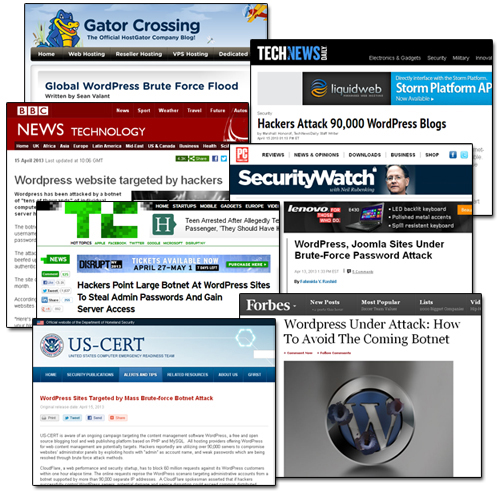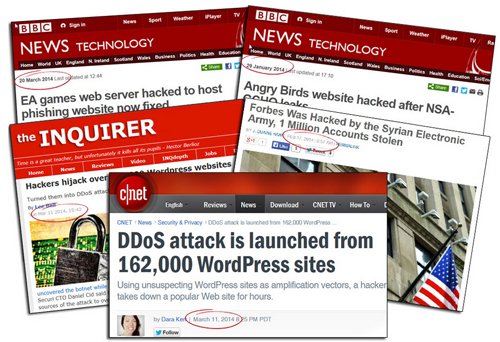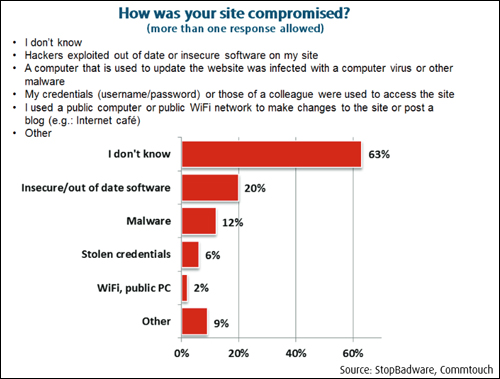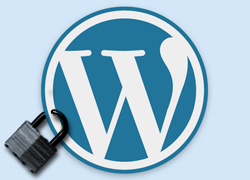 In 2013, WordPress installations around the world were subjected to worldwide brute force attacks.
In 2013, WordPress installations around the world were subjected to worldwide brute force attacks.
These attacks were caused by networks of infected computers programmed to attack other computers (botnets).
(WordPress is often the target of malicious attacks by hackers)
In March 2014, technology sites reported that over 160,000+ WordPress-powered web sites had been hacked.
(160,000+ WordPress sites were attacked in a massive DDoS attack in early 2014. Screenshot image: Blog Defender)
According to the Cnet report,
“With some old-fashioned trickery, hackers were able to get more than 162,000 legitimate WordPress-powered Web sites to mount a distributed-denial-of-service attack against another Web site.”
(Source: cnet.com/news/ddos-attack-is-launched-from-162000-wordpress-sites)
As reported by security firm Sucuri, hackers had leveraged a well-known flaw to attack unsuspecting WordPress web sites and direct a distributed-denial-of-service cyberattack (DDoS) towards another popular website.
Whenever attacks on WordPress sites happen on a worldwide scale, it’s natural for people to start asking just how safe and secure WordPress is as a platform for building and running websites.
Powering millions of websites worldwide makes WordPress a target for attempted hacking attacks. But do you really need to be concerned about WordPress as being a secure web platform?
In this article, you will learn some of the main reasons why you should choose WordPress if you are concerned about website security.
WordPress Security Explained
Let’s start by looking at facts …
Thousands of websites and blogs are attacked every year … not just WordPress sites!
The scale of attacks on websites and blogs worldwide is increasing on a daily basis, and it’s only going to get worse.
It’s safe to assume that if you haven’t been hacked yet, then it’s only a matter of time … regardless of the web platform your website has been built with!
Since it’s no longer a matter of if, but when before someone tries to hack your website, are there any advantages that WordPress can offer you in terms of security?
”How Can Open Source Applications Keep Hackers Away?”
Some people will often argue that WordPress should not be used for building and running a business online because it is a freely available open source program.
Open source CMS platforms like WordPress, Drupal and Joomla are free to use and anyone can view the entire underlying code.
The argument, then, goes something like this: If everyone can study the Open Source software code for WordPress, then hackers can also easily download all of the code and go through it in great detail, looking for security weaknesses in the code that they can exploit …
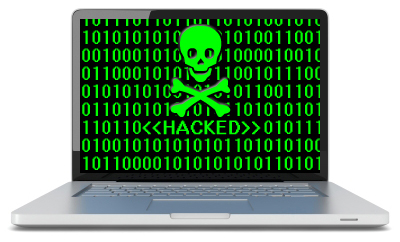
(It’s not a matter of if, but a matter of when before someone attempts to hack your website … WordPress or no WordPress!)
While it’s true that WordPress is a free program and hackers can easily access it and study the code looking for weaknesses and vulnerabilities (hackers can do the same with any software program), the fact that WordPress is a free, open-source software platform actually makes it a lot more secure in a number of ways.
The reason for this is that WordPress is supported by an open community consisting of thousands of software programmers, plugin developers and theme designers who constantly help improve the program and make WordPress more secure …
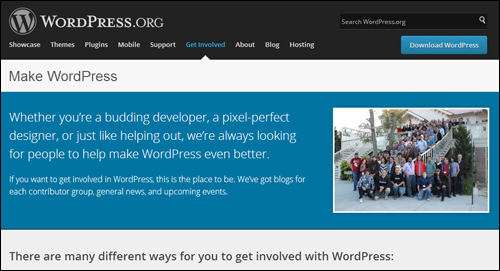
(With WordPress, the software platform is built, maintained and updated by a community of hundreds of web developers. Image source: make.wordpress.org)
WordPress continually evolves largely through the effort of a huge volunteer community working around the clock to fix any issues detected by users. It benefits from hundreds of web developers, designers and users dedicated to improving the code, fixing bugs and making WordPress safer for every user …
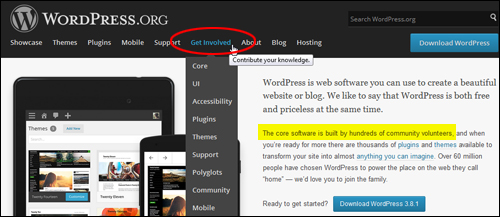
(The WordPress core software is built by a global community of volunteers. Screenshot source: WordPress.org)
As soon as security issues are identified by developers or users, these are immediately recorded in user forums and addressed by the WordPress core developers …
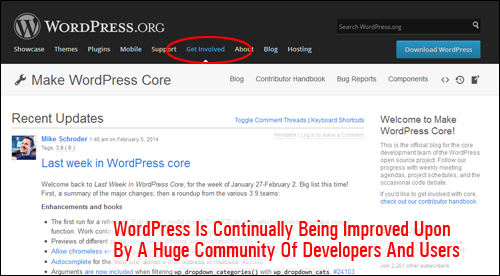
(WordPress is continually being improved by a huge community community of users and web developers. Screenshot image: WordPress.org)
The WordPress community support system is quite formidable and anyone can help contribute to the improvement of the software.
For example:
- If you notice bugs and security issues, you can report these by notifying security@wordpress.org.
- If you find any issues in a plugin, you can also report these by sending an email to plugins@wordpress.org.
This is the reason why the WordPress team is constantly releasing new version updates, and why you continually need to keep your sites and blogs frequently up-to-date …
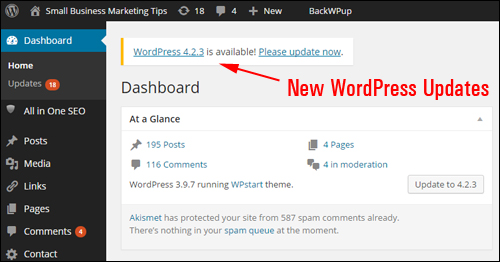
(WordPress frequently releases new updates to address security issues)
WordPress Vs Proprietary Platforms
We’ve just seen that one of the security advantages of using an open source technology like WordPress is that users benefit from a large community of developers who continually contribute to improve code security. By contrast, a proprietary or “closed-source” CMS platform is typically developed by a small team of developers with limited time and resources to provide continuous security monitoring, software maintenance, bug fixes and updates.
The WordPress CMS is 100% free to download, use and modify, and hundreds of volunteers and expert developers work on improving the platform. Can a proprietary CMS company afford to employ as many developers and programmers and still deliver users software that is 100% free to download, use and modify as they wish?
WordPress CMS Vs Other Open Source CMS Applications
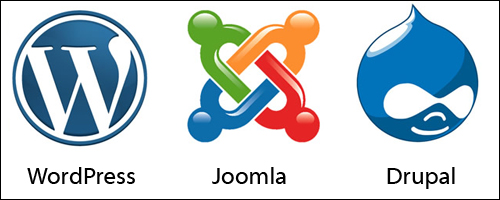
(CMS Platforms - WordPress, Joomla and Drupal)
Whilst on the topic of Open Source content management systems, there is valid research to support the fact that WordPress is safer than other Open Source CMS platforms like Drupal and Joomla.
For example, here is one study showing the number of security vulnerabilities found in popular CMS platforms …
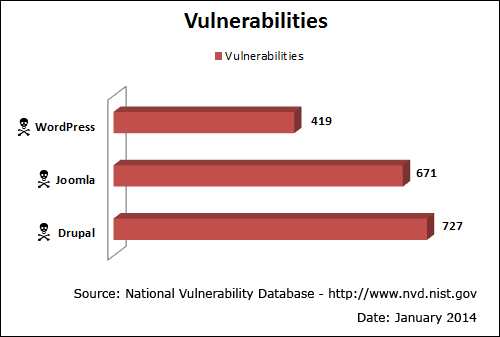
(WordPress has fewer security vulnerabilities than other CMS applications. Screenshot source: National Vulnerability Database)
Other studies also indicate that, because WordPress is easy to use and to keep updated, when sites across different CMS platforms were tested for security issues, sites built with WordPress had fewer exposure to risk …

(Blog Defender – CMS Tests. Screenshot: BlogDefender.com)
WordPress Should Not Be Blamed
If someone hacks into your WordPress site, don’t be too quick to place the blame on WordPress.
According to a report called “Compromised Websites: An Owner’s Perspective,” which is published by security organizations Commtouch and StopBadware, many webmasters are not fully aware of the security threats their websites are exposed to, how to secure a website, or how to deal with compromises.
In fact, over 60% of webmasters surveyed for the report didn’t know how their sites were compromised by hackers after an attack …
(Most webmasters don’t even know how their sites were hacked. Source: StopBadware.org)
Of more immediate concern, however, is the fact that most security-related problems arise from users forgetting to upgrade their CMS software to a newer version …
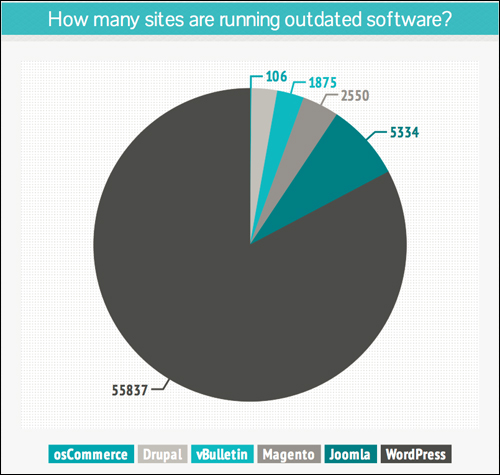
(Many WordPress sites use outdated versions. Screenshot image: Sucuri.net)
When WordPress security issues were looked at in more detail, it was found that only around between 20% – 35% percent of vulnerabilities discovered in 3rd-party code are found in the WordPress CMS core, while 70% – 75% percent of all security issues are found in plug-ins and extensions created by third-party developers …
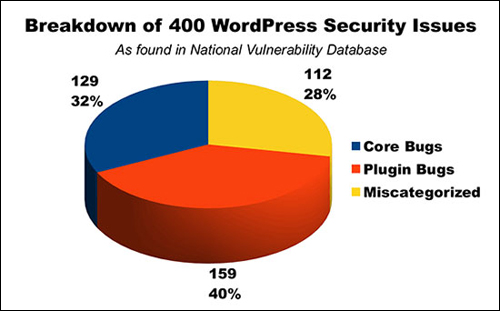
(WordPress Security Issues. Image source: WebDesign.org)
Like many modern software applications, WordPress is regularly updated in order to deal with new security vulnerabilities that may arise. Improving software security is always a concern, and to that end, you should always keep your WordPress software, plugins, and themes updated to the latest version.
WordPress … Good Enough For Banks To Use!
The amount of misinformation about how secure WordPress is has even caused Matt Mullenweg, the co-founder of WordPress, to chime into the discussion.
In an article entitled “A Bank Website on WordPress” posted on April 15, 2015, Matt wrote the following about WordPress …
There’s a thread on Quora asking “I am powering a bank’s website using WordPress. What security measures should I take?” The answers have mostly been ignorant junk along the lines of “Oh NOES WP is INSECURE! let me take my money out of that bank”, so I wrote one myself, which I’ve copied below.
I agree there’s probably not a ton of benefit to having the online banking / billpay / etc portion of a bank’s website on WordPress, however there is no reason you couldn’t run the front-end and marketing side of the site on WordPress, and in fact you’d be leveraging WordPress’ strength as a content management platform that is flexible, customizable, and easy to update and maintain.
Matt then goes on to provide a couple of security tips, before stating the following …
For an example of a beautiful, responsive banking website built on WordPress, check out Gateway Bank of Mesa AZ. WordPress is also trusted to run sites for some of the largest and most security-conscious organizations in the world, including Facebook, SAP, Glenn Greenwald’s The Intercept, eBay, McAfee, Sophos, GNOME, Mozilla, MIT, Reuters, CNN, Google Ventures, NASA, and literally hundreds more.
As the most widely used CMS in the world, many people use and deploy the open source version of WordPress in a sub-optimal and insecure way, but the same could be said of Linux, Apache, MySQL, Node, Rails, Java, or any widely-used software. It is possible and actually not that hard to run WordPress in a way that is secure enough for a bank, government site, media site, or anything.
Millions of businesses around the world choose WordPress to build their presence online, including banks, leading brands, and e-commerce sites, not just bloggers.
Other Issues That Can Affect Security
Other areas that can affect blog security include:
- No platform is safe from hacking. As many as 90% of all websites across all platforms are vulnerable to being attacked, mostly due to software that is out of date.
- The biggest security weakness of all web platforms seems to be the users themselves. An example of this is users ignoring good password security recommendations.
- Lack of constant system monitoring. Security processes need constant monitoring, testing, updating and improvement.
- Hosting server setup. For example, websites on shared webhosting servers are only as safe as the least safe site on the hosting grid, so if another user has a weak FTP password on your shared server, then all sites on that server can potentially become vulnerable.
There’s No Reason To Avoid Choosing WordPress
As you can see, WordPress is quite secure. As long as you commit to implementing basic web security measures (which all website owners should do, regardless of their web platform) and keep your WordPress software (and plugins, themes, etc.) regularly updated, there’s no reason to avoid choosing WordPress.
![]()
WordPress Security – Practical Tips
To learn about ways to protect your WordPress site from brute force attacks see this article: Ten Security Measures That Can Help To Prevent Brute-Force Attacks On Your WordPress Website
A vulnerable web site provides malicious users with a valuable resource for denial of service attacks, spreading malware and engaging in information theft. Blog Defender WordPress Security Plugin makes your WordPress site invisible to bot and hacker attacks. Learn more about this plugin here:
If you are using outdated versions of WordPress remember to make a backup before updating your software to benefit from the latest security updates. This way, if things don’t go as planned, you can always restore.
If you don’t want to perform manual backups, there are a number of WordPress plugins you can use. Learn about a WordPress backup plugin that can automate your backup process here: Back Up, Duplicate & Keep Your WP Websites Protected With Backup Creator WordPress Plugin
![]()
Article References
For more information on the above, see the following sources:
- ITProPortal.com
- National Vulnerability Database
- BlogDefender.com
- UpAndUpStudios.com
- StopBadware.org
- Sucuri.net
- WebDesign.org
- Quora.com
- Ma.tt
Hopefully, now you have a better understanding of problems that can affect your web site and how WordPress can help you expand your business online. To learn more about the security benefits of using the WordPress CMS platform please see our related posts section or subscribe to receive updates and notifications when new articles are published.
***
"I was absolutely amazed at the scope and breadth of these tutorials! The most in-depth training I have ever received on any subject!" - Myke O'Neill, DailyGreenPost.com
